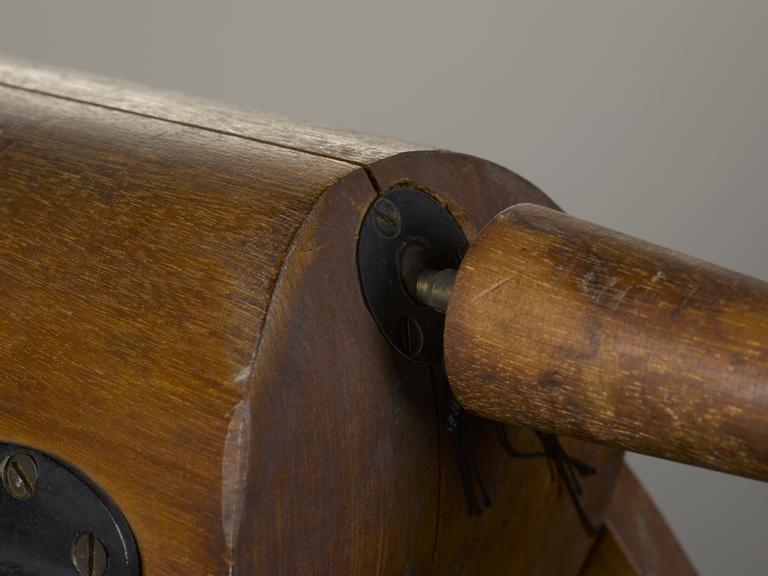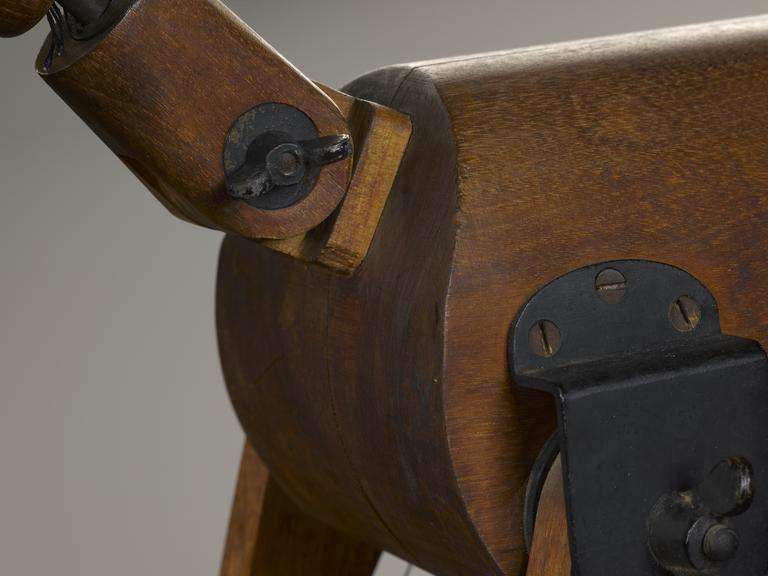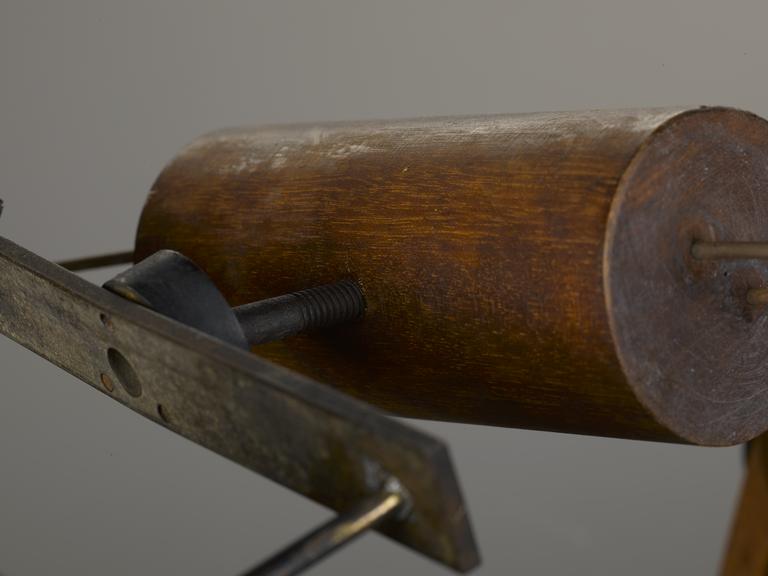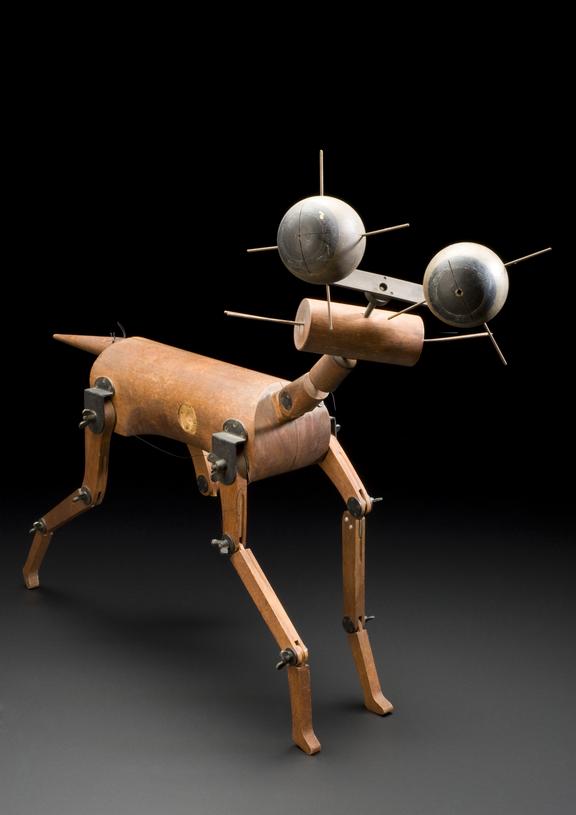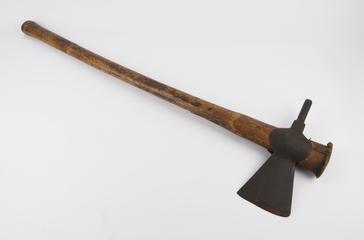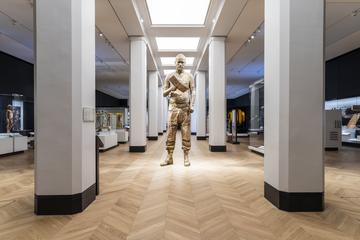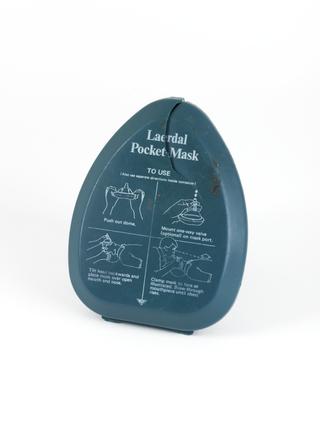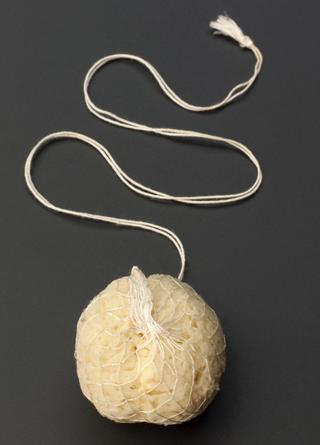
Model of a cat to demonstrate reflexes
- Made:
- 1940-1980 in United Kingdom
- maker:
- Charles Sherrington







Model of a cat to demonstrate reflexes. The joints are articulated and the eyes are much enlarged. This object is alleged to have been made by or for Charles Scott Sherrington and has been the property of John Widdicombe and Stephen Creed in the past. Widdicombe gave it to Dr Thelma Williams of St George's College Medical School, who donated it to the museum. Made 1940-80.
The role of nervous reflexes was demonstrated using this wooden cat, whose joints are articulated and eyes much enlarged. It is believed to have been made by British physiologist Sir Charles Sherrington (1857-1952), who was a Professor of Physiology at the University of Liverpool for 16 years. He undertook neurological research on animals and his contributions helped understand the nervous system. The cat model had various owners. It was finally given to Dr Thelma Williams of St George’s College Medical School, London, by respiratory physiologist John Widdicombe. Dr Williams donated it to the Science Museum’s collections.
Animal experimentation for scientific and medical research remains controversial. One main argument is whether the benefits of animal testing outweigh the moral issues. The first organised anti-animal experiments or anti-vivisection movements were at their peak in Britain in the 1870s and 1880s. They led to tighter restrictions on who could perform experiments.
Details
- Category:
- Veterinary Medicine
- Object Number:
- 1999-917
- Materials:
- metal
- Measurements:
-
overall: 470 mm x 810 mm x 180 mm,
overall (including stand): 530 mm x 790 mm x 270 mm, 4.14 kg
- type:
- model - representation and cat
- credit:
- Williams, Thelma, Dr.
